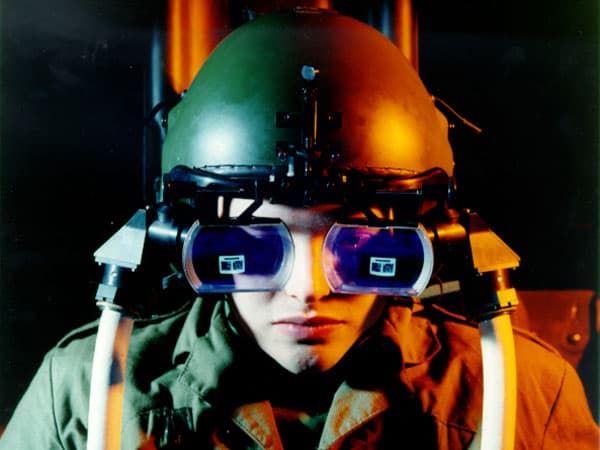About us
The AVRRC is the longest established Virtual Reality Research Centre in a UK University, formally opened on 15th July 1996 by HRH Duke of Edinburgh.
The Centre’s research develops novel solutions/tools to solve complex engineering challenges involving the application of advanced modelling, simulation and visualisation. Additionally, we exploit techniques such as augmented and virtual reality where relevant. The Centre’s research has been funded by UK and EU Research Councils and close collaboration with International and National organisations.
AVRRC vision
Our goal is to transform the development and application of next generation digital modelling, simulation and visualisation techniques to:
- Find solutions to very challenging research questions of national/international significance
- Seek out opportunities where our research can have a beneficial impact on societal development
- Ensure the research pipeline delivers research high impact results.
- Provide an exciting environment in which our staff, researchers, postgraduate students and undergraduate students get the best possible experience of undertaking relevant research.
AVRRC objectives
We are driven by a set of strategic objectives including:
- Researching next generation end-2-end digitalization for Industry 4.0 and beyond
- Supporting advanced decision-making for next generation engineering and manufacturing using novel sensors and AI/machine learning technologies
- Furthering develop the field of virtual engineering its enabling technologies and effective application
- Developing highly intuitive immersive technologies to aid human understanding of complex heterogeneous data/information
- Fully understanding highly complex system behaviour (involving people, processes and technology) to predict performance and control emergent properties in manufactured systems
- Applying innovative systems thinking and human factors knowledge to provide effective solutions to extremely difficult and intractable system problems
- Developing innovative solutions for model-based engineering
- Create highly reliable and verifiable models of systems and their sensors
- Providing effective visualizations in order to improve understanding
- Developing optimal solutions to extremely complicated and often regarded intractable problems through a process of advanced visual analytics
- Enhancing the user's experience in distributed collaborative environments
AVRRC history and roots

The AVRRC can trace its roots back to the early 1980s having delivered some of the world’s first VR inspired solutions. Professor Roy Kalawsky was arguably the first person in the UK to have built and demonstrated the first AR/VR system in the UK in the early 1980s. This and his later research achieved several World firsts in the VR field – leading to the establishment of the AVRRC in 1995. The Advanced VR Research Centre was formally opened by HRH Duke of Edinburgh on 15th July 1996.
However, our involvement with VR was considerably earlier than this - here are a few examples:
Roy Kalawsky's VR Lab - Late 1980s
VR Research/Development Lab - by Roy Kalawsky - this was built from various VPL Research VR peripherals, Silicon Graphics Workstations, Mac Computer, Convolvotron (3D Audio Spatializer), Data Glove, various VPL Head mounted Display (HRX shown), Audio mixers and lots of software including Swivel, Body Electric etc. This facility supported a wide range of research projects from fundamental human factors to technology demonstrators where VR was exploited.
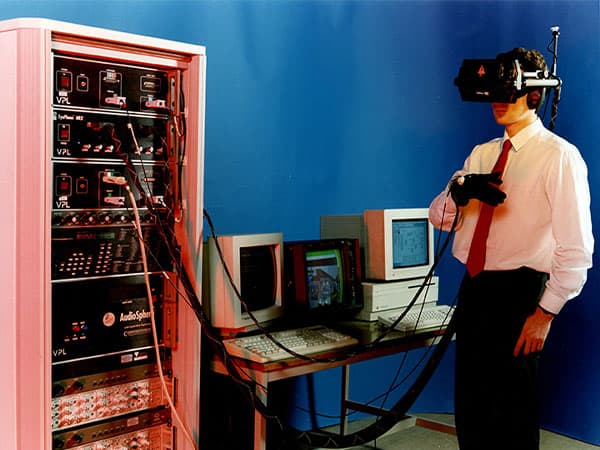
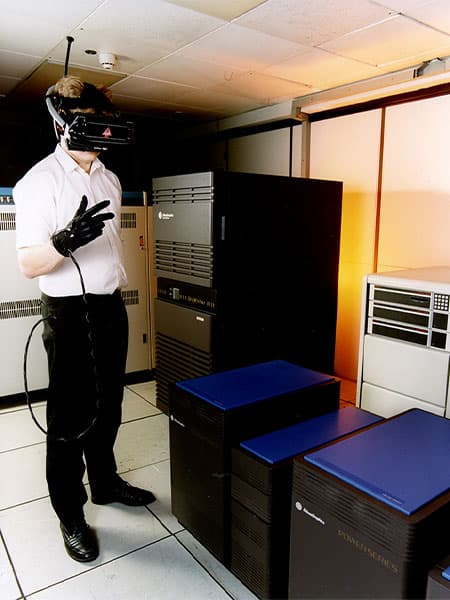
VECTA - Virtual Environment Configurable Training Aid - 1990s
This system designed by Roy Kalawsky allowed full procedural training in a virtual cockpit. This was driven by Silicon Graphics and a range of VR peripherals by VPL Research. The cockpit and outside was represented by computer graphics - It is not possible here to show actual virtual cockpit details for security reasons). This was the first VR trainer to be exhibited at Farnborough.
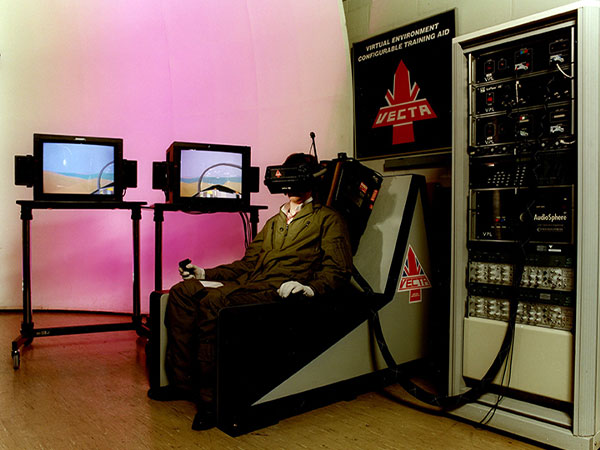
RAVE VECTA Virtual Environment Configurable Training Aid as exhibited at Paris International Airshow
This system developed by Roy Kalawsky was the first example in the world of a mixed reality VR system where the virtual environment was integrated with the real world using video pass through. The trainee pilot could see/feel and interact with real cockpit instruments whilst seeing virtual displays of the outside world. This was effectively a mixed reality VR training system.
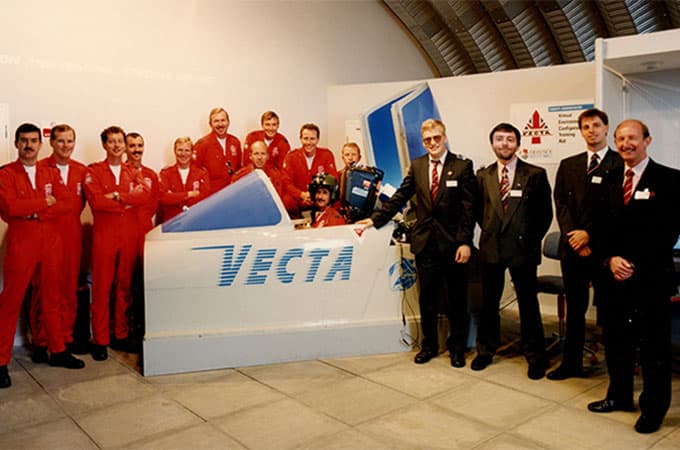
Rover 400 - Rapid Prototyping Virtual Design of Dashboard and Internal Systems - 1990s
This rapid prototyping system allowed Rover engineers and human factors scientists to evaluate different layout configurations.
All internal components could be repositioned using the DataGlove. One of the key features of this system that all programming was undertaken using a visual programming language - conventional software programming was not required.
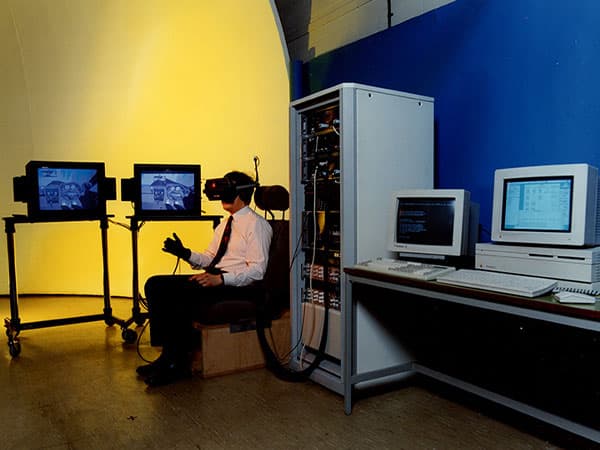
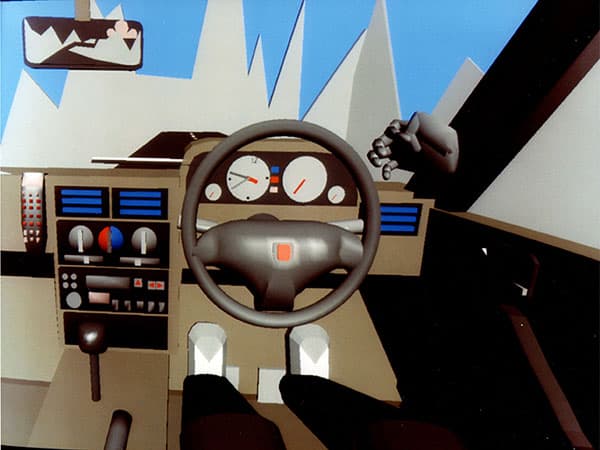
Augmented Reality using High Resolution See Through Head Mounted Display - 1990s
During the 1990s the resolution of head mounted displays was extremely poor. To get round this Kalawsky's team developed a unique see through head mounted display that used high resolution coherent fibre optic bundles to transfer high resolution images from large graphics screens to the head mounted display. A special optical combiner for each eye enabled the computer graphics image to be overlaid onto the real world in stereo mode. A Polhemus electromagnetic tracker was used to compute head line-of-sight, allowing a high-resolution, full-colour, image-coupled system to be built. This was used for many research investigations and even allowed simulation of future head mounted display systems for military applications. Graphics where provided by a suite of Silicon Graphics platforms.
